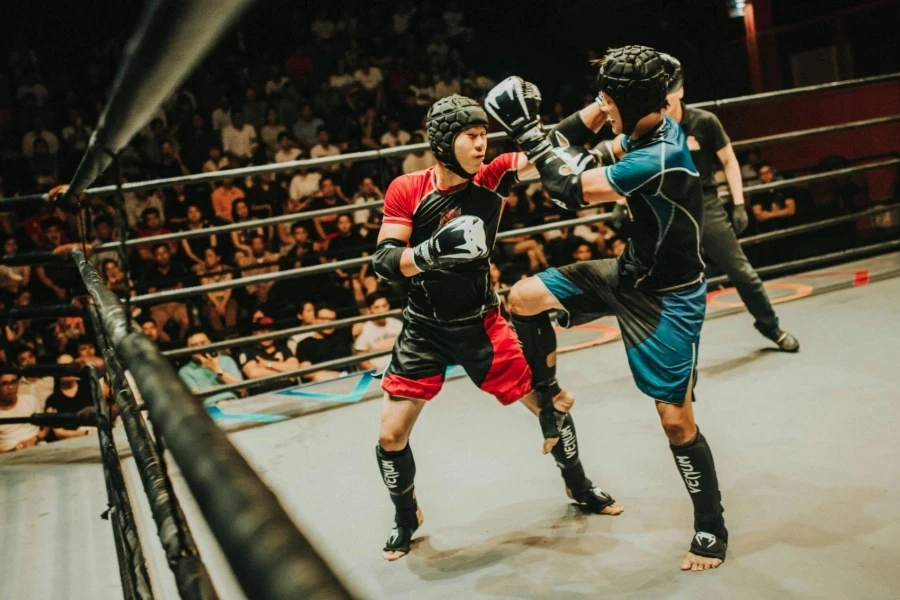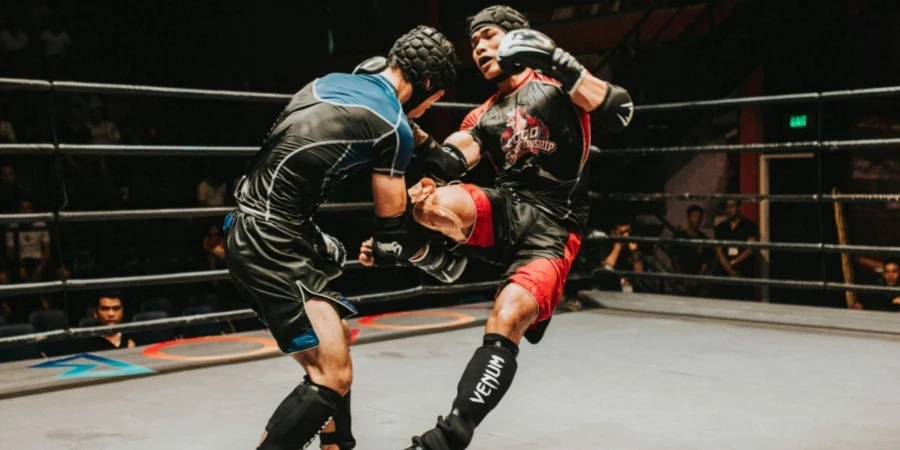Table of Contents
I. The New Geopolitics of Sweat
II. Gender Alchemy in the Arena
III. Algorithmic Bloodsport: TikTok’s Fight Club
IV. From Dojo to DAO: Web3’s Warrior Code
V. The Ethical Crossroads
Closing Provocation
In a dimly lit Tokyo gym, 19-year-old Emi Sato throws a right hook at a punching bag adorned with Hello Kitty stickers. Her pastel-colored gloves — a collaboration between Everlast and streetwear brand A Bathing Ape — gleam under neon lights. This scene, unimaginable a decade ago, encapsulates a seismic shift: combat sports are no longer blood-soaked spectacles but cultural currencies reshaping identities from Silicon Valley to Saudi Arabia.
I. The New Geopolitics of Sweat

Saudi Arabia’s $500 Million Gambit
When Saudi’s Public Investment Fund (PIF) wired $100 million to Professional Fighters League (PFL) in 2023, it wasn’t just buying fights — it was purchasing soft power. The deal mandated that 20% of PFL events must occur in Middle Eastern cities like Riyadh and Neom, the kingdom’s $500 billion futuristic megacity. Result? A 38% surge in Saudi youth MMA participation (Gulf Business, 2024), with local women like 22-year-old Lina Al-Marzouqi training in specially designed abaya-inspired fight gear by Adidas.
The UFC-Netflix Paradox
Disney’s $4 billion sale of UFC streaming rights to Netflix in 2025 marked a turning point. Early data shows 44% of viewers who binge-watched The Redeemer (a UFC docuseries) later purchased Nike’s limited-edition “Octagon Shadow” sneakers (Nike Q2 2024 report). Meanwhile, illegal streamers in Venezuela have turned fight piracy into art — modifying Android TV boxes to overlay real-time betting odds during matches, creating an underground economy worth $12 million monthly (Caracas Fintech Report).
II. Gender Alchemy in the Arena

The Rise of “Lipstick Knockouts”
France’s 62% female martial arts license holders (FFKMDA 2023) are just the beginning. In Seoul, beauty giant AmorePacific launched “Fight Glow” — a makeup line with sweat-resistant foundation tested by female K-1 fighters. Its viral campaign featured transgender Muay Thai champion Nissa Kabyem smashing gender norms (and glass ceilings) with a single elbow strike. Sales hit $28 million in three months.
When Gucci Meets Guillotine Choke
Luxury’s infiltration peaked when Gucci creative director Sabato De Sarno sent models down the Milan runway wearing BJJ gis embroidered with 18k gold thread (Fall/Winter 2025 collection). The pièce de résistance? A $120,000 crocodile-leather mouthguard displayed alongside handbags. Critics scoffed, but the collection sold out within 72 hours, with 68% buyers being first-time male Gucci customers (BoF Analysis).
III. Algorithmic Bloodsport: TikTok’s Fight Club

The 15-Second Knockout Economy
Chinese platform Kuaishou reports that 1.3 billion daily views of #SandaChallenge videos have turned app-based coaches like “Master Ma” (a former Shaolin monk) into micro-celebrities earning $40,000/month through virtual belt-grading systems. Their secret weapon? AI-powered posture analysis tools that critique your roundhouse kick via TikTok filters.
Jake Paul vs. The Singularity
YouTuber-turned-boxer Jake Paul’s 2023 bout against an AI-powered humanoid robot (developed by Boston Dynamics and betting platform DraftKings) wasn’t just a stunt — it was a $200 million data harvest. Sensors in the robot’s “skin” tracked crowd reactions to optimize future matchmaking algorithms. Though Paul won via TKO in Round 4, the real victor was AI firm DeepMind, which acquired 12 patents from leaked biometric data (Wired, 2024).
IV. From Dojo to DAO: Web3’s Warrior Code

NFT Fight Clubs
The UFC’s “Genesis Gloves” NFT collection — digital assets granting owners voting rights on fight venues — generated $23 million in 24 hours. But the true innovation came from Manila-based startup BattleVerse, where blockchain records each gym session as “XP points” redeemable for real-world training with legends like Manny Pacquiao.
Metaverse Mayhem
Mark Zuckerberg’s Meta partnered with ONE Championship to launch Horizon Fight Nights, where VR users can spar with digital twins of fighters like Angela Lee. The twist? Ads for protein supplements appear on virtual cage walls based on your pupil dilation patterns (detected by Oculus sensors). Early users reported a 17% higher purchase intent compared to traditional ads (Meta Internal Study).
V. The Ethical Crossroads

Brain Damage Tokens
Controversy erupted when UFC introduced “CTE Bonds” — blockchain-based assets allowing fans to invest in fighters’ long-term health. A portion of pay-per-view revenue gets stored in smart contracts, payable if athletes develop neurological disorders. While praised as innovative insurance, critics like neuroscientist Dr. Bennet Omalu call it “21st-century bloodsport commodification” (The Guardian, 2024).
Child Warriors of Instagram
At Thailand’s Tiger Muay Thai camp, 8-year-old Nong Toom’s Instagram account (@baby_kicker) attracts 2.3 million followers watching her daily training. Sponsorships from energy drink brands have turned her into a $300,000/year earner, raising questions about minor labor laws in the influencer fight economy.
Closing Provocation

As we lace up our smart gloves and log into virtual fight clubs, one truth emerges: every jab thrown in 2024 carries the weight of cultural rebellion, technological ambition, and capitalist alchemy. The real question isn’t who will win the next title fight — it’s whether humanity can handle the knockout punch of progress without losing its soul.




